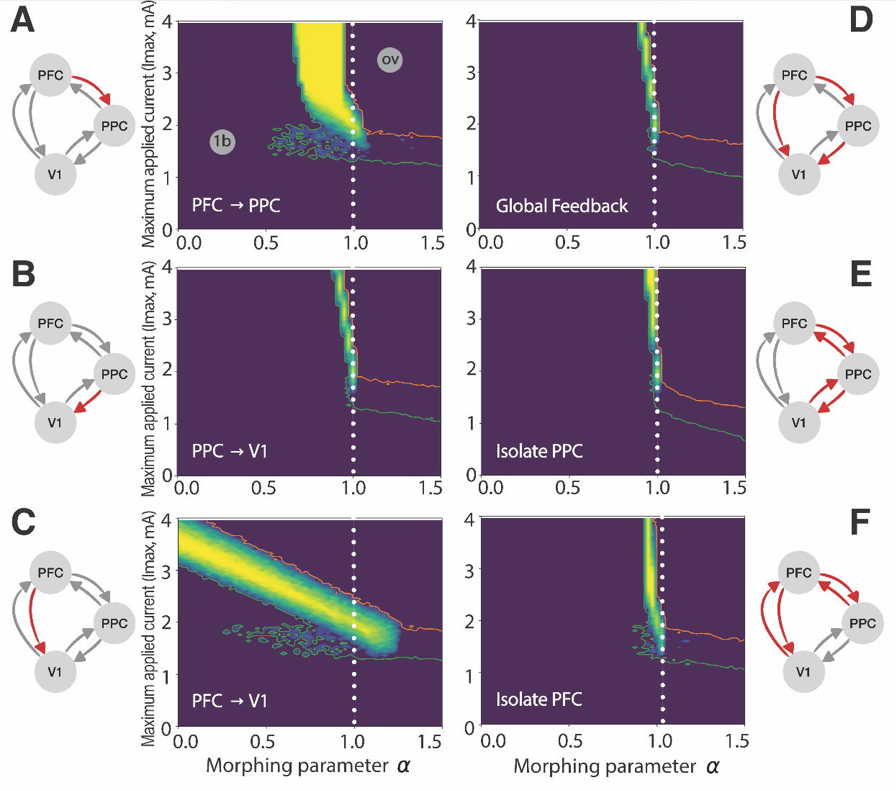The neural and computational architecture of feedback dynamics in mouse cortex during stimulus report
Authors
Ciceri, S., Oude Lohuis, N., Rottschafer, V., Pennartz, C., Avitabile, D., van Gaal, S., Olcese, U.

Abstract
Conscious reportability of visual input is associated with a bimodal neural response in primary visual cortex (V1): an early-latency response coupled to stimulus features and a late-latency response coupled to stimulus report or detection. This late wave of activity, central to major theories of consciousness, is thought to be driven by prefrontal cortex (PFC), responsible for "igniting" it. Here we analyzed two electrophysiological studies in mice performing different stimulus detection tasks, and characterize neural activity profiles in three key cortical regions: V1, posterior parietal cortex (PPC) and PFC. We then developed a minimal network model, constrained by known connectivity between these regions, reproducing the spatio-temporal propagation of visual- and report-related activity. Remarkably, while PFC was indeed necessary to generate report-related activity in V1, this occurred only through the mediation of PPC. PPC, and not PFC, had the final veto in enabling the report-related late wave of V1 activity.
Links
bioRxiv PDFBibTeX
@article {Ciceri2023Neural,
author = {Simone Ciceri and Matthijs Nicolai Oude Lohuis and Vivi Rottschafer and Cyriel Pennartz and Daniele Avitabile and Simon van Gaal and Umberto Olcese},
title = {The neural and computational architecture of feedback dynamics in mouse cortex during stimulus report},
elocation-id = {2023.07.19.549692},
year = {2023},
doi = {10.1101/2023.07.19.549692},
URL = {https://www.biorxiv.org/content/early/2023/07/19/2023.07.19.549692},
eprint = {https://www.biorxiv.org/content/early/2023/07/19/2023.07.19.549692.full.pdf},
journal = {bioRxiv}
}